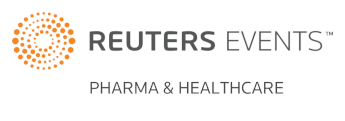Year in Review 2014: Market Access
Market access is a labyrinth pharma must navigate to bring their products to patients. Throughout 2014, we followed the introduction of early access schemes, gathered tips on preparing the perfect value proposition, and attempted to answer the all important question: what is value in healthcare?

1. Adaptive Licensing: How it Impacts Pharma and the Patient
In an interview with Paul Simms, Richard Barker, Director of UK-based Center for the Advancement of Sustainable Medical Innovation (CASMI), considers the implications of the adaptive licensing pilot project launched earlier this year by the European Medicines Agency. “Patient organizations, physicians, payers, and responsible NHS managers have to come together on this pilot,” Barker says. Adaptive licensing could be a significant tool in the armory to support more efficient medicine development and licensing and ultimately ensure faster patient access to innovative medicine.
2. How to Create the Perfect Value Proposition
The perfect value proposition is difficult to attain. In this short piece, we combine insights from speakers at the eyeforpharma Payer Webinar to understand what payers consider in their decisions, and what are current market access trends.
3. It's Time to Go on the Payer Journey
In an interview with Nick de Cent, Omar Ali, Formulary Development Pharmacist for NHS England in the Surrey and Sussex Healthcare NHS Trust, spoke about the need for pharma companies to engage payers throughout the development of their products, pointing out that payers are not getting involved early enough in the commercial aspects of pharma’s offerings.
4. Real World Data: Promises and Challenges
Although Big Data was the industry’s buzzword in the past year, the time has come to acknowledge that it will not replace other sources of information in healthcare. In an interview with Zuzanna Fimińska, Oliver Mast, Head of Global Market Access, Roche Diagnostics GmbH, reflects on the role of Big Data in supplementing clinical trials and small-scale panel research. “There is a heavy debate about the relevance of RWD. One the one hand, there are some ideological considerations. As long as you insist on the research paradigm of control, it’s more difficult to accept observational data. I’m a true believer that we need RWD to compliment RCTs,” Mast says.
5. Realizing the Potential of Joint Working: Towards an Ideal Partnership
Deirdre Coleman identifies mindset as the key obstacle to successful partnership between NHS and industry. Current initiatives are only scratching the surface of what could be achieved and this is unlikely to change as misperceptions dominate the discourse. “The NHS is a very risk-adverse organization and they don’t want to be perceived as being biased in favor of one provider. They don’t currently consider pharma as a strategic partner, but as a provider of products and services operating on the periphery,” says David Coleiro, partner at Strategic North, who prepared a report on the potential of pharma and NHS collaboration, on which the article is based.
6. How the Multidisciplinary Organization of the Future Will Succeed in Access and Approval
Aidan Brian catches up with Adam Hacker, Vice President, EMEA Therapeutic Area Leader, Hematology& Oncology at Janssen, to discuss the speedy approval of ibrutinib capsules in two forms of blood cancer. The European Commission’s decision came in less than one year after regulatory submission, and was a result of a close collaboration between Janssen and Pharmacyclics. Hacker shed some light on how this was accomplished: “To be successful in a highly collaborative environment we need to have the right talent in the organization. A few years ago each individual discipline was very much focused on their own function. Now what I look for in my own medical affairs team are much more rounded professionals that have a good understanding of varying touch points with other functions and this helps them in the decisions they have to make.”
7. First Steps on the Way to Earlier Access
Early access to promising medicines is in everybody’s interest, and this year saw a number of initiatives being launched to achieve that goal. Leela Barham examines key features of the EMA’s Adaptive Licensing pilot, and the MHRA’s Early Access to Medicines Scheme. “The schemes are different, but both have at their heart the desire to speed up access for those patients with unmet needs and experience of a very serious or life threatening condition,” she states in her editorial. She goes on to provide tips for companies on how to check if and when joining early access scheme makes sense, cautioning that required forms, dossiers, and support discussions must be filed with the regulators. “All these costs must be weighted up against the gains of taking part,” she concludes.
8. The Impact of Value Misalignment on Patient Outcomes
Paul Sutton looks for common threads in the myriad of definitions of value in healthcare. “In theory, any definition must align with the ‘triple aim’,” Sutton writes. “To improve population outcomes and enhance quality of life, while simultaneously lowering healthcare costs. Yes, in the real world, definitions are far from consistent.” But there is a greater cause for concern. Based on the Value is the Target report, Sutton observes that European payers do not trust the industry’s claims about value. He writes: “Payers say they are ‘not at all’ or ‘not very confident’ in the reliability, completeness and transparency of information biopharma provides to demonstrate value.”
